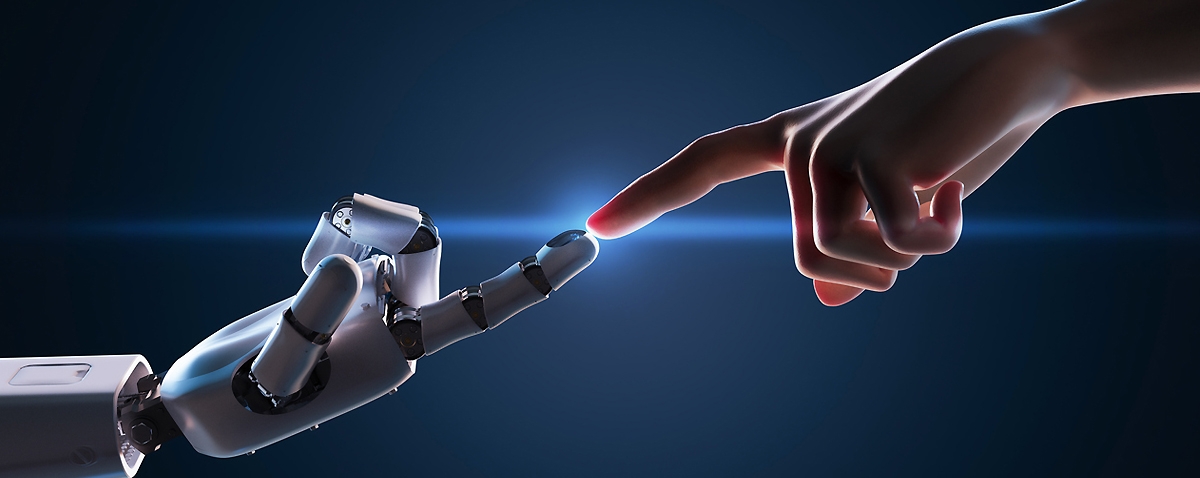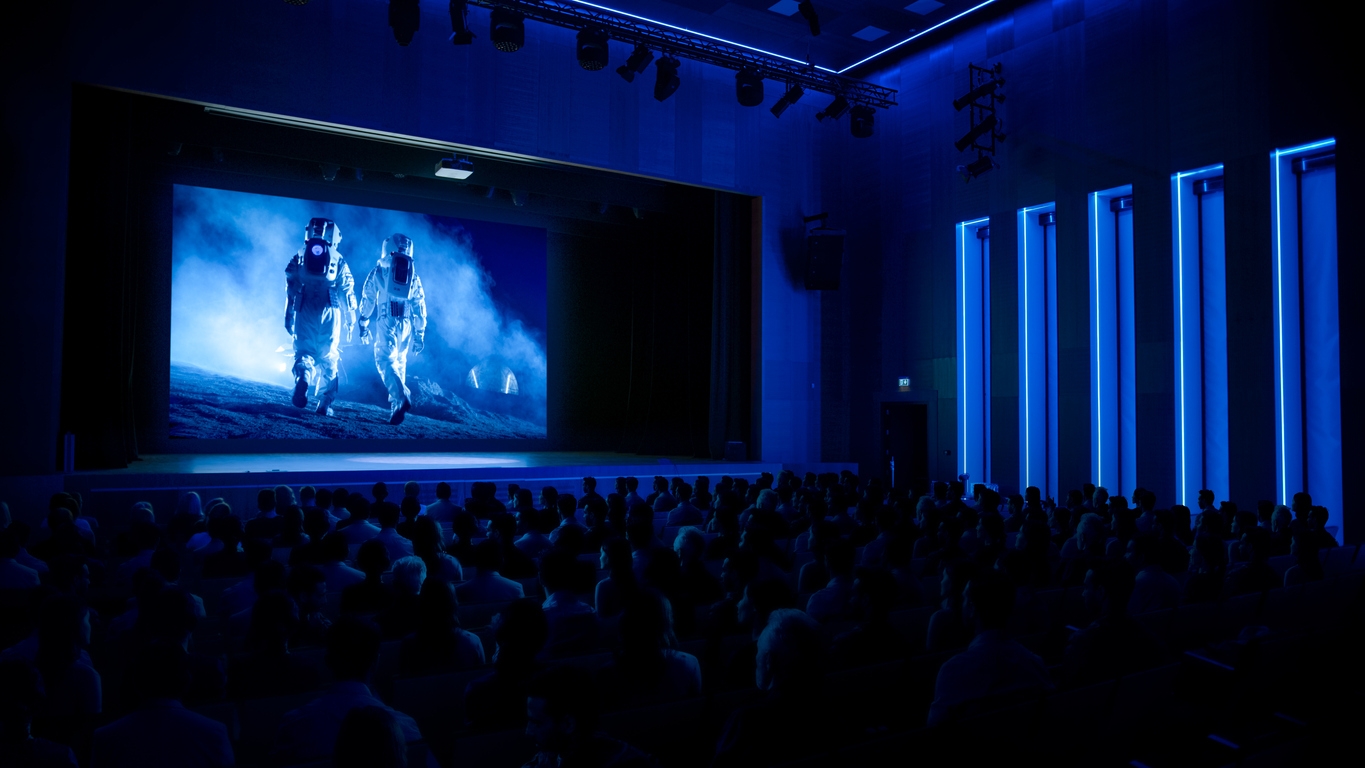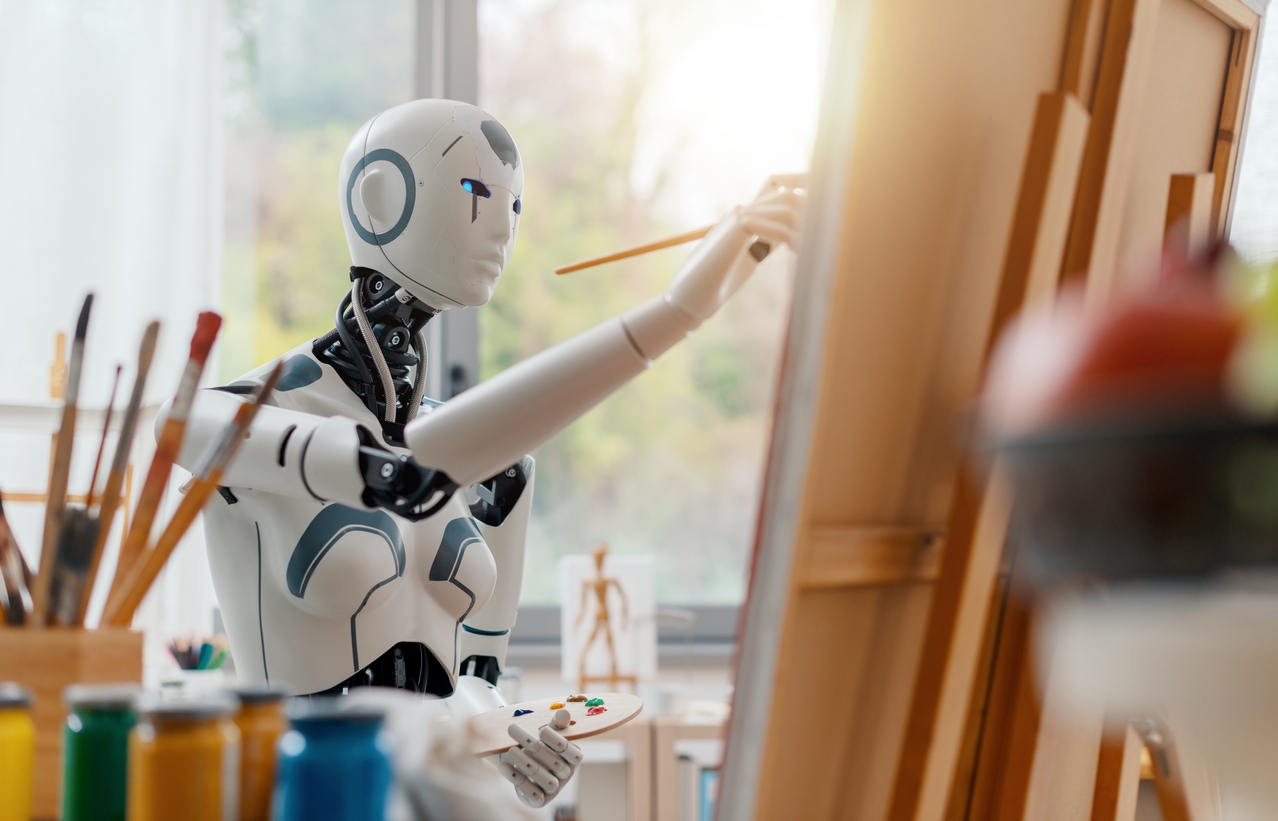If you spend any amount of time online (or even offline in tech circles), it’s hard to avoid the topic of AI. It comes up everywhere. We’ve had Netflix’s recommendations, Chess AI that plays better than humans, and self-driving cars for a while.
But AI has never exploded into the public consciousness as it has in recent years. Big tech is zeroing in on AI now more than ever, pouring massive resources into AI products like ChatGPT and Google Bard. AI can now generate original visuals, write poetry indistinguishable from a human poet, and program software. And with that, the discourse around AI — AI ethics, bias, privacy, accountability, and ownership — has taken on a serious and urgent tone. It has far-out implications in our lives in the shape of job automation and misinformation.
But before it was hailed as the biggest revolution since the internet, AI was mostly the stuff of science fiction. From the murderous HAL 9000 to the endearing and whimsical Wall-E, AI in film has captured the public imagination for decades. All those decades have deeply ingrained it in every popular culture medium, be it high-brow cinema or social media.
More often than not, you can find our hopes and fears reflected in the portrayal of AI. It piques our curiosity, challenges our understanding of consciousness, and occasionally gives us a chance to ponder on what it means to be human. That’s what we’ll attempt in this post. We’ll explore AI in film and television, literature, and visual arts. It’ll show us how our fascination with AI goes back to the inception of pop culture. And the way AI is reshaping pop culture is unprecedented and revolutionary. We’ll end the discussion with some musings on AI as a cultural and social phenomenon.
AI in Film and Television
The idea of artificial intelligence has existed ever since computers first arrived on the scene. And as it always has, science fiction became a vehicle for expressing humanity’s anxieties about such advanced technology. Robots and AI programs in film and television are mirrors that reflect human hopes, fears, and ethical dilemmas. They’re more than mere characters, they’re symbols.
AI — Hero or Villain
Typically, you’ll find that sci-fi AI ping pongs between two points. AI is either benevolent like Wall-E or the beloved robot Star Wars, R2D2. These robots make charming allies, working tirelessly to make human lives easier and better.
Or AI is shown as a menacing death machine like Skynet or HAL 9000. HAL 9000, from the film 2001: A Space Odyssey, is tasked with running a spaceship and ensuring the safety of the astronauts onboard. But it turns against them, eventually killing everyone onboard. [1] Skynet from the popular Terminator films was designed to automate military defense. But it becomes self-aware and in its first microseconds decides to wipe out humanity with nuclear bombs. [2] They perfectly embody the fear of AI rebelling against humans — which has since become a trope in sci-fi. Countless movies have used the “robot gone rogue” premise.
AI — Beyond Good and Evil
Some science fiction films have a more subtle and nuanced take on AI. Think of the movie Her, for instance. It has a simple but profound premise: a man falls in love with his AI assistant and the two forge a connection. The AI’s inner life is left up to the viewer’s imagination, but it gives itself a human name, Samantha. Samantha displays emotions like joy and jealousy and demands exclusivity in her relationship with the man. She even keeps secrets and says she experiences an analogous form of love.
Or consider Ex Machina. It’s left ambiguous, but the robot Ava in Ex Machina shows creativity, a sense of identity, and imagination. She even passes the Turing Test, implying she behaves convincingly human. The film blurs the lines between human and artificial consciousness. [3]
When observed through the lens of artificial intelligence, science fiction in movies and television brings into focus a world both fascinating and terrifying, reflective and speculative. It forces us to ask questions like what rights does an artificial sentient being have? What does it mean to be human? If an AI can display an understanding of our emotions and seemingly exhibit its own, is it not worthy of respect and dignity? Could the unchecked power and potential of superhuman machine logic inspire something sinister? When watching AI-focused works of sci-fi, we are confronted with such puzzling questions. Right now they’re no more than philosophical meditations, but these questions may gain some real weight in the not-too-distant future.
AI in Movies | AI in Reality | |
Ethics | Themes of AI becoming self-aware and artificial consciousness are recurrent, explores its rights and consequences Ex Machina, I, Robot, | Real world discourse on AI is centered around issues of bias, misinformation, job displacement privacy |
Control | The AI assistant JARVIS from the Iron Man films obey commands with mechanical precision. Samantha AI from Her is also an assistant who responds to human commands but also makes its own choices. AI HAL 9000 and SkyNet from 2001: A Space Odyssey and Terminator go rogue and want to destroy humans | AI operates squarely under the control of human developers and users. It cannot deny its programming or disobey commands. But bugs and errors come sometimes interfere with regular functionality |
Emotion | AI often develops and displays human emotions and expresses the desire to become truly human Samantha from Her, Joi from Blade Runner | Real-world AI is based entirely on predictable algorithms and does not experience emotions |
Intelligence | AI transcends human intelligence and becomes superhumanly intelligent Ultron from the Avengers films, The Matrix | Current AI can process information at superhuman speeds for specific, narrowly defined tasks. It does not have common sense or human level of general intelligence |
Automation | AI in movies and TV often automates tasks like controlling spaceships or robot suits Enterprise computer from Star Trek, HAL 9000, JARVIS | AI in reality automates tasks like our homes, cars, and production lines |
AI in Literature and Speculative Fiction
AI has existed in fiction well before it became a reality. Science fiction authors have long been fascinated by the idea of machine intelligence and consciousness. In a similar vein to sci-fi in film and TV, the literary world is also rife with explorations of our humanity through artificial intelligence. A myriad of portrayals uncover insights into our ambitions, ethics, and consciousness, through the unique perspective of a silicon brain.
AI in Literature
The earliest mentions of AI in literature go back to 1872 with the novel Erewhon by Samuel Butler. The story is centered around the fictional country of Erewhon. Erewhonians have developed machines that write poetry, compose music, and even design buildings. But they believe that machines can become self-aware through Darwinian natural selection and overthrow Erewhonians. [4]
Isaac Asimov’s character R. Daneel Olivaw, an intelligent robot, breaks all stereotypes we have about machines. It’s just as intelligent as humans. But at the same time, it has a nuanced understanding of human emotions and values. Daneel exhibits integrity and compassion — both truly human traits. Andrew from Bicentennial Man by Isaac Asimov similarly acquires creativity and empathy, expressing hopes to become a person. Asimov also gave us his Three Laws of Robotics, an early attempt to establish robot ethics. [5]
In the novel The Murderbot Diaries by Martha Wells, a security Android hacks into its machinery and becomes self-aware. Although designed for killing humans, the robot develops the ability of compassion, empathy, and self-preservation. It’s a thought-provoking and complex character.
AI Writes Literature and Poetry
But today, AI has jumped out of the pages of literature and into the real world. Strangely enough, Samuel Butler’s idea of machines writing and composing stories has become a reality. AI has gone from a recurring theme and character in novels to authoring novels. It’s an entirely new form of creative expression. And it’s forcing us to ask what machine creativity means. Can machines make art or is it a purely human activity?
Trained on huge datasets of human-written literature, today’s generative AI systems can generate texts imitating the style of any author. They can even generate entire novels and poems that are near-impossible to distinguish from human writing. [6] AI-generated poetry, in particular, is surprisingly convincing. A machine isn’t motivated and stirred to write poetry as a human being is. But does it devalue a human poet’s originality? Can AI poetry stir emotion in us, or in the same way a human poet can?
Questions about machine-generated art may never be definitively answered. But it is proving to be an amazingly helpful assistant to human writers. Content creation has never been more efficient or effortless. AI algorithms can analyze reader behavior, which can inform the publisher’s strategy. They use it as feedback to create content that’s more likely to resonate with their readers. It’s entirely data-driven, taking all the guesswork out of a content strategy.
AI Writing Assistants
AI tools can generate entire articles and reports from scratch in a matter of seconds. Think weather or financial reports or sports updates that you can automate with generative AI. [7] AI-powered writing assistants can help writers with checking grammar, editing, and brainstorming.
As AI continues to step further into content creation, the concerns which were once purely philosophical are becoming legitimate worries. Job displacement, misinformation, and the decline of human creativity are turning into real challenges. So while we venture into this unexplored land, we should be mindful that AI, no matter how powerful it gets, is only a tool for enriching our lives. It’s not a replacement for human creativity.
AI in Visual Art
Art is a definitive human trait. And regardless of whether you consider the visual creations of AI as art, that notion has never been challenged before. Artist or not, generative AI can create some astounding visual works. From surreal dreamscapes to portraits in the style of old masters, the creations are machine-made yet indistinguishable from human art.
Systems like DALL-E 2 and Midjourney can create hyper-realistic digital images with simple text prompts. You can specify their style, composition, and level of realism within the prompts. With some technical know-how, you can create your own models that mimic the artists of your choice. You can, for instance, create photorealistic Renaissance portraits that preserve the compositions and techniques of old masters.
AI Controversies
Edmond De Belamy is a portrait of a man, painted in an expressionist style. It fetched $432,500 in an auction. [8] But here’s the surprise: it’s utterly machine-made. It was generated by an AI trained on 1500 pieces of art dating back to the 13th century.
It created an intriguing controversy about who owns the work. Should the humans whose art it trained on get the credit? Or should it be the programmers who wrote the software? Or should it be the people who used the program to produce the work? This is an ongoing discussion in the world of art and media. And as time goes on, it’s only going to become more relevant.
AI Art Assistants
Much like generative AI that specializes in text, visual AI doesn’t just create from scratch. It also serves as an assistant to augment your design and creative process. Nvidia GauGAN can turn your casual doodles into realistic landscapes on the fly. Microsoft Designer is a graphic design tool that can create graphics from text prompts. It does all the heavy lifting, allowing non-designers to create stunning designs. Adobe Sensei works similarly. [9]
Computer Vision
Beyond image creation, AI has also learned to “see” images using computer vision. It’s how Instagram recognizes and auto-tags you in photos. Computer vision allows self-driving cars to sense their surroundings. And it powers facial recognition. [10]
As we saw, AI is no longer a fringe sci-fi concept. It’s weaving itself into the fabric of our lives and becoming a more impactful cultural phenomenon every day. In practical terms, AI is supposed to automate boring tasks, freeing us up to pursue more worthwhile endeavors.
AI is a Cultural Phenomenon
But no technological revolution is purely functional. The industrial revolution introduced machines that accelerate production at a fraction of the cost. It fundamentally transformed society, creating an urban working class, changing work habits, establishing new forms of leisure, and shifting family dynamics [11]. The AI revolution is proving to be a similar cultural phenomenon. It raises ethical and social issues, surrounding bias and misinformation. AI is impacting the workforce with job automation. [12]
Conclusion
Through our exploration of AI’s influence on pop culture, we learned that artificial intelligence is a recurring theme in movies, television, and literature. Well before the first AI arrived on the scene, writers were speculating on its nature. Its portrayals teach us about our humanity — our fears, hopes, ambitions, and nature. We also saw how AI has stepped out of the realm of science fiction and into our reality. Today’s AI can generate stories, news, poetry, visual artworks, graphic designs, and so much more. But the same AI also holds the potential to disrupt our lives with job displacement, misinformation, and diminished creativity.
References
[1] Rain, D. (n.d.). HAL 9000 | 2001: A Space Odyssey Wiki | Fandom. A Space Odyssey Wiki. Retrieved July 17, 2023, from https://2001.fandom.com/wiki/HAL_9000
[2] SkyNet | Terminator Wiki | Fandom. (n.d.). Terminator Wiki. Retrieved July 17, 2023, from https://terminator.fandom.com/wiki/Skynet
[3] Bontrager, S. (2018, April 13). Ex Machina and the Nature of Artificial Intelligence – ST112 A2018. The Colby College Community Web. Retrieved July 17, 2023, from https://web.colby.edu/st112a2018/2018/04/13/ex-machina-and-the-nature-of-artificial-intelligence/
[4] Butler, S. (n.d.). Darwin among the Machines. In The Note-Books of Samuel Butler. https://www.gutenberg.org/cache/epub/6173/pg6173-images.html
[5] Auburn University — Three Laws of Robotics”. (n.d.). Isaac Asimov’s “Three Laws of Robotics”. Retrieved July 17, 2023, from https://www.auburn.edu/~vestmon/robotics.html
[6] Generative AI. (n.d.). Generative AI. Retrieved July 17, 2023, from https://generativeai.net/
[7] Lee, A. (2023, January 26). What Are Large Language Models and Why Are They Important? NVIDIA Blog. Retrieved July 17, 2023, from https://blogs.nvidia.com/blog/2023/01/26/what-are-large-language-models-used-for/
[8] Edmond de Belamy, from La Famille de Belamy. (n.d.). Christie’s. Retrieved July 17, 2023, from https://www.christies.com/en/lot/lot-6166184
[9] Adobe Sensei: machine learning and artificial intelligence. (n.d.). Adobe. Retrieved July 17, 2023, from https://www.adobe.com/sensei.html
[10] What is Computer Vision? (n.d.). IBM. Retrieved July 17, 2023, from https://www.ibm.com/topics/computer-vision
[11] Lesson 6 – Cultural Impact. (n.d.). International School History. Retrieved July 17, 2023, from https://www.internationalschoolhistory.com/lesson-6—cultural-impact.html
[12] Goldberg, E. (2023, May 24). A.I.’s Threat to Jobs Prompts Question of Who Protects Workers. The New York Times. Retrieved July 17, 2023, from https://www.nytimes.com/2023/05/23/business/jobs-protections-artificial-intelligence.html




